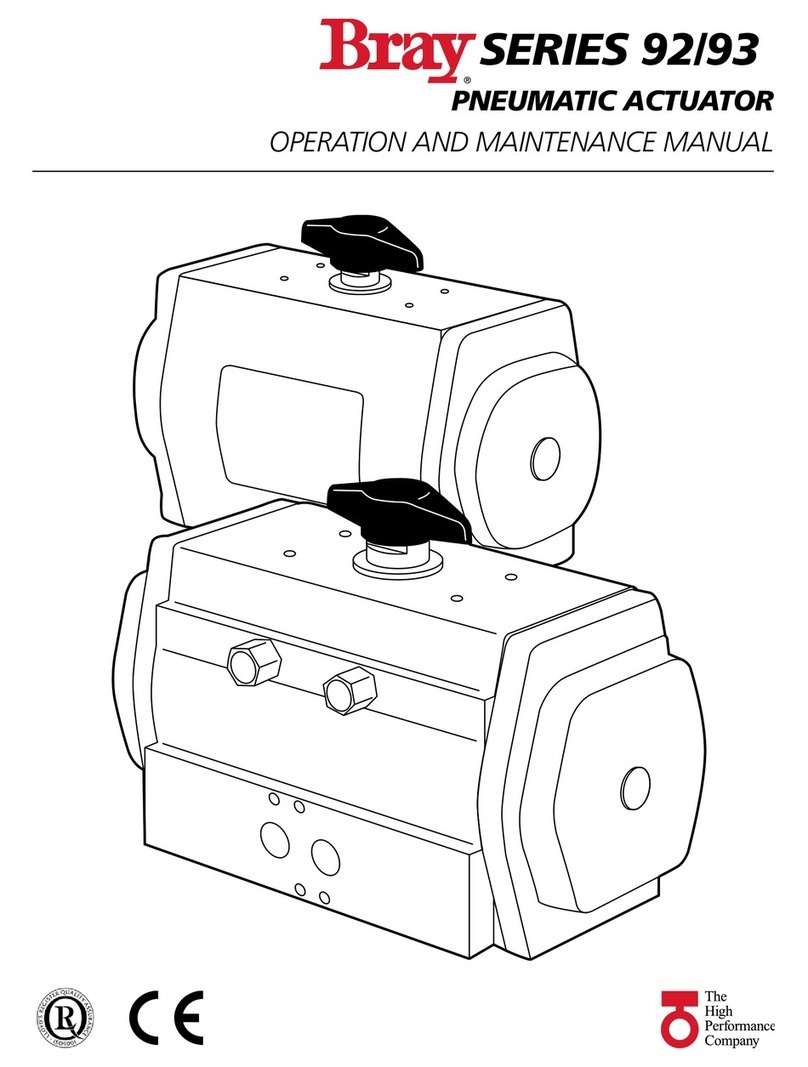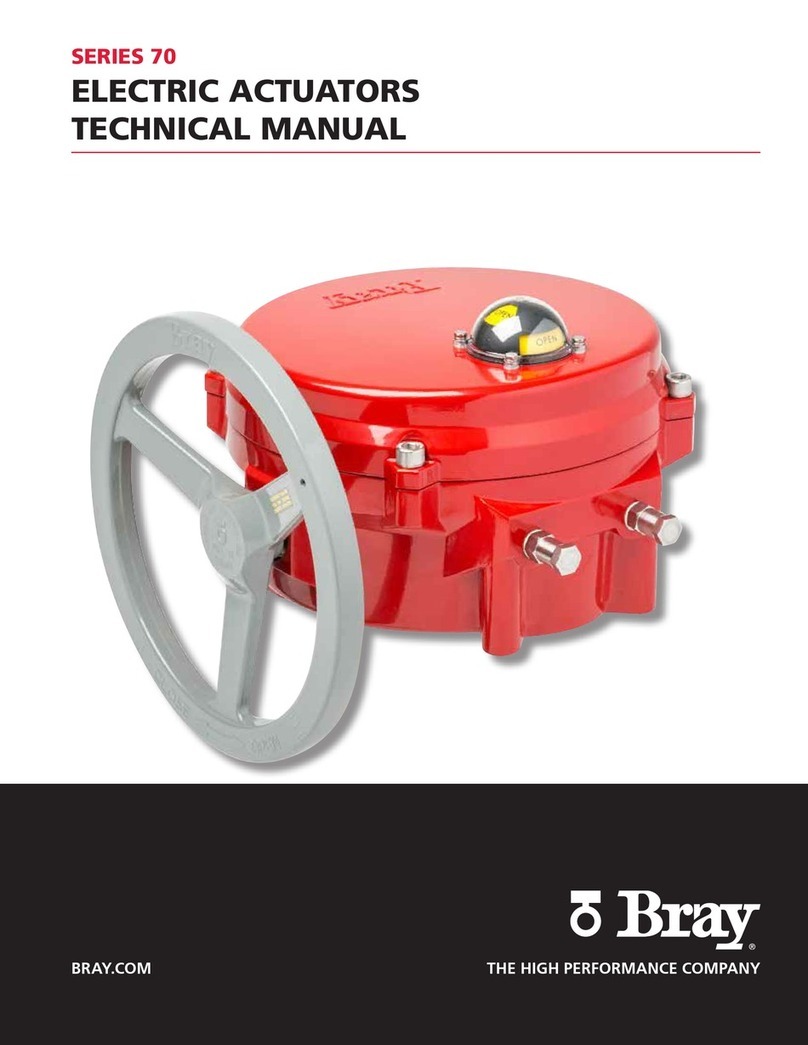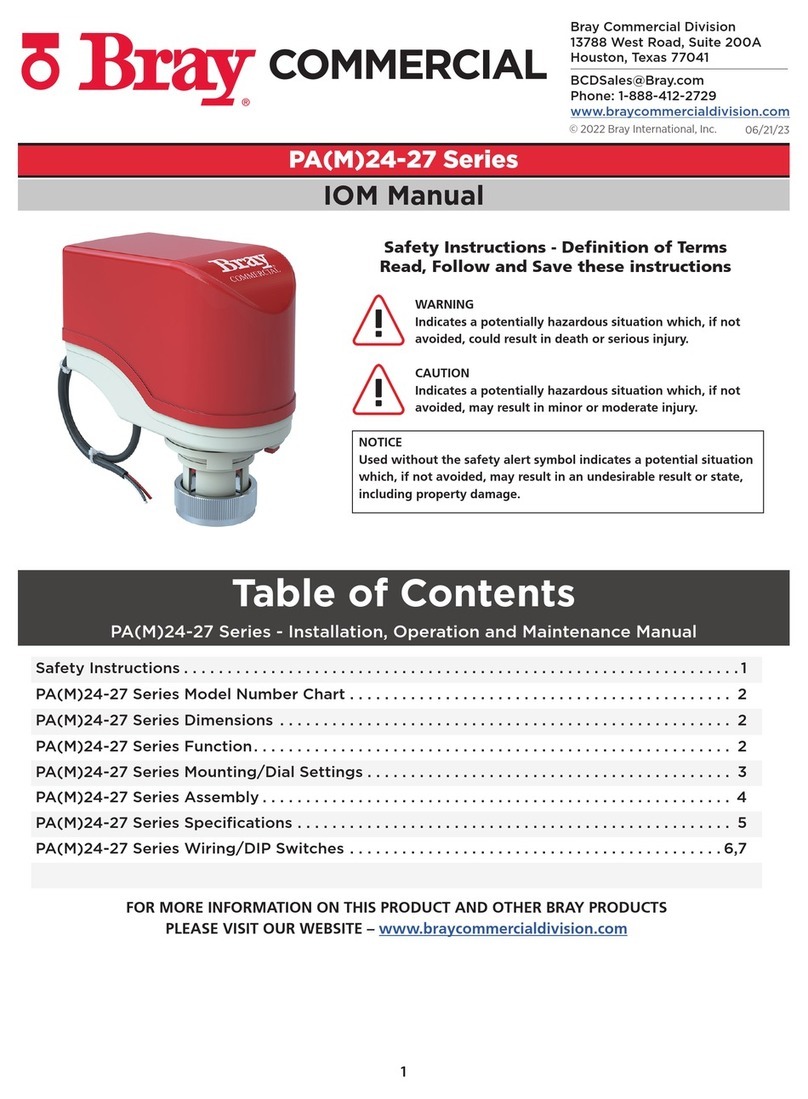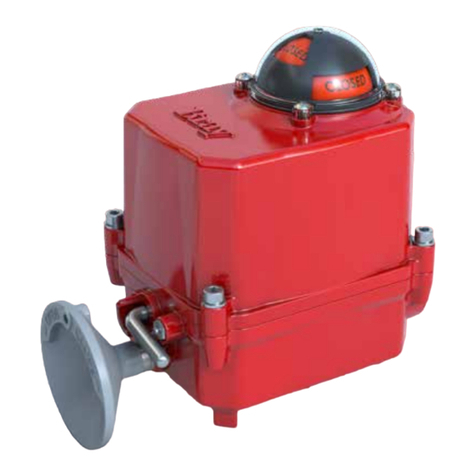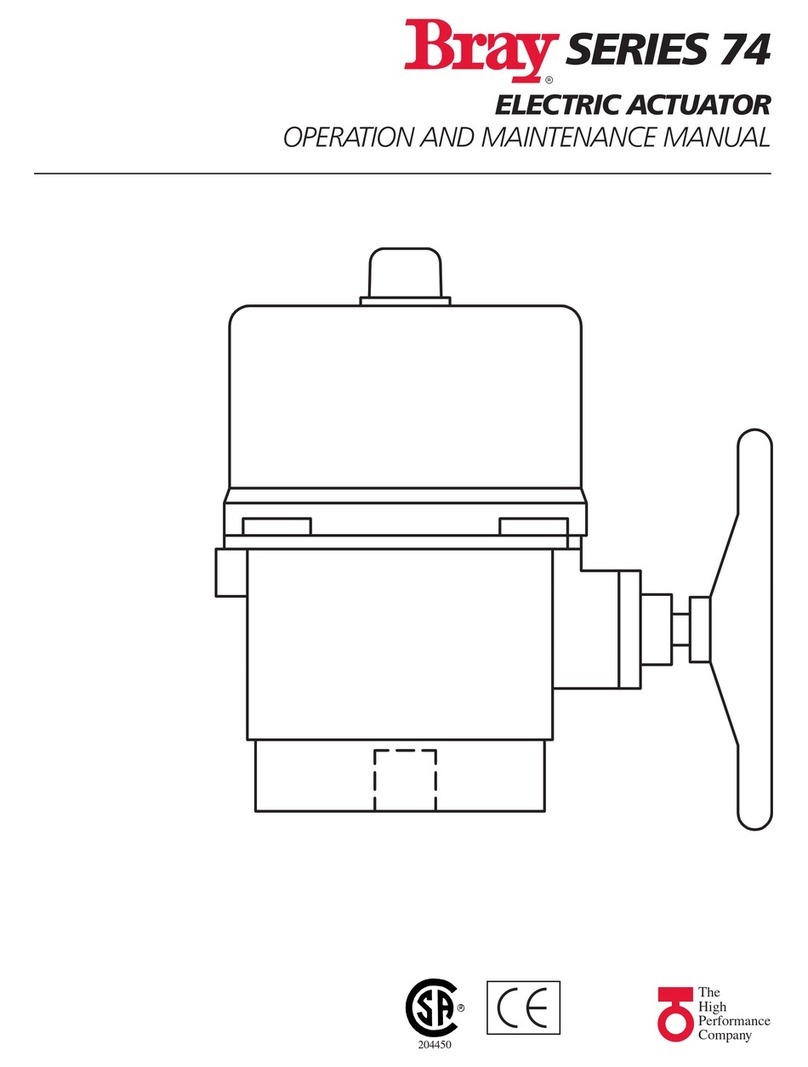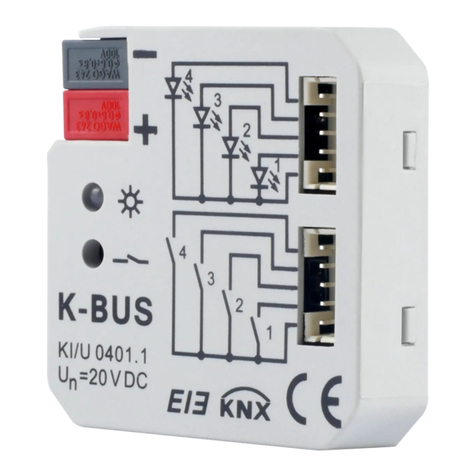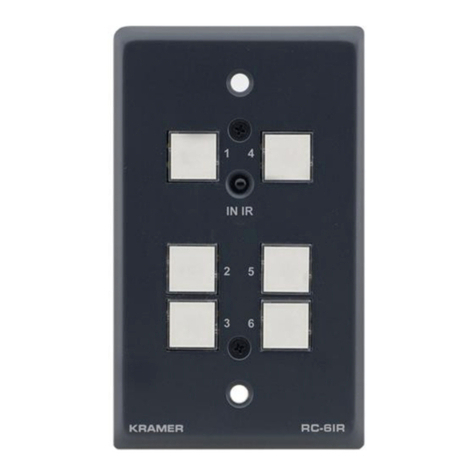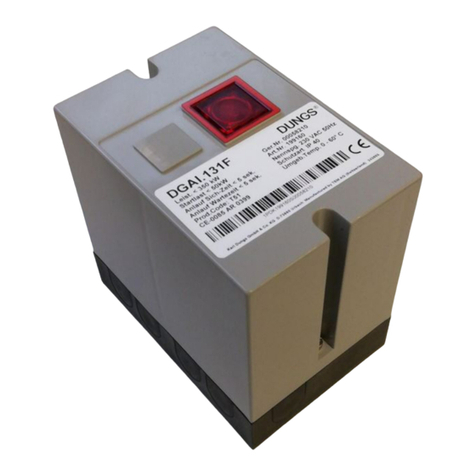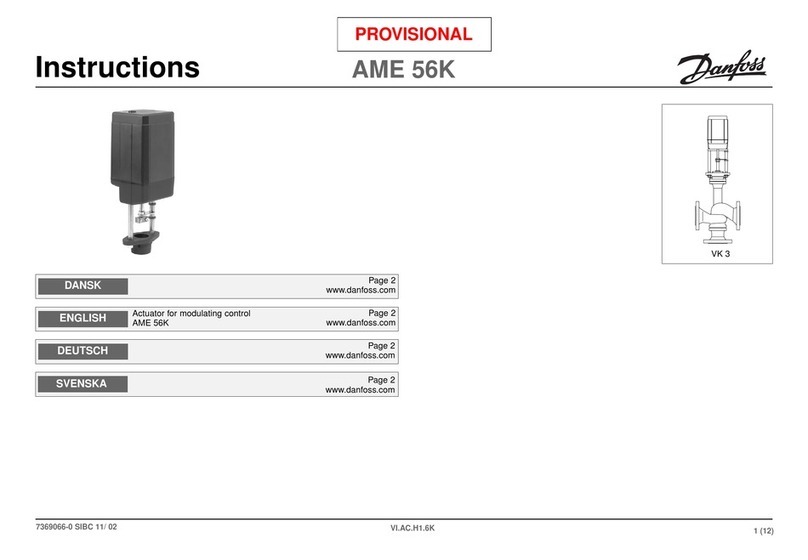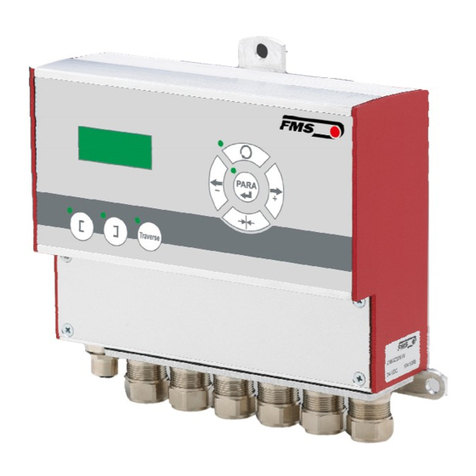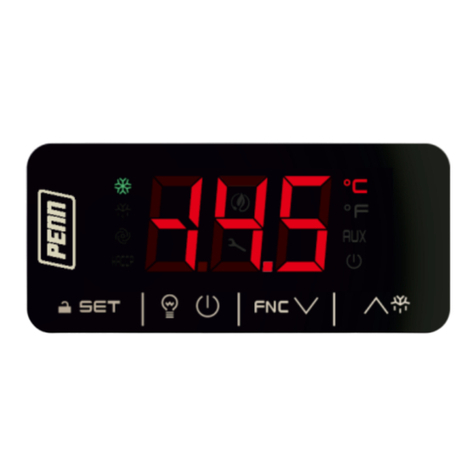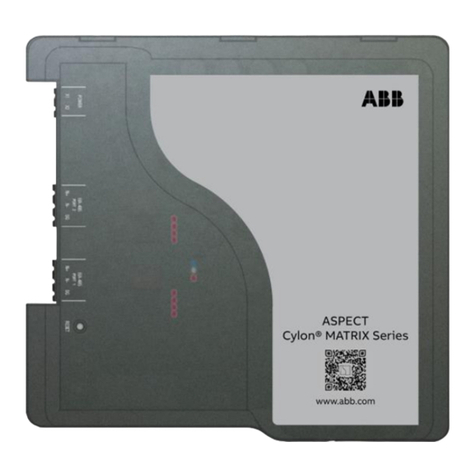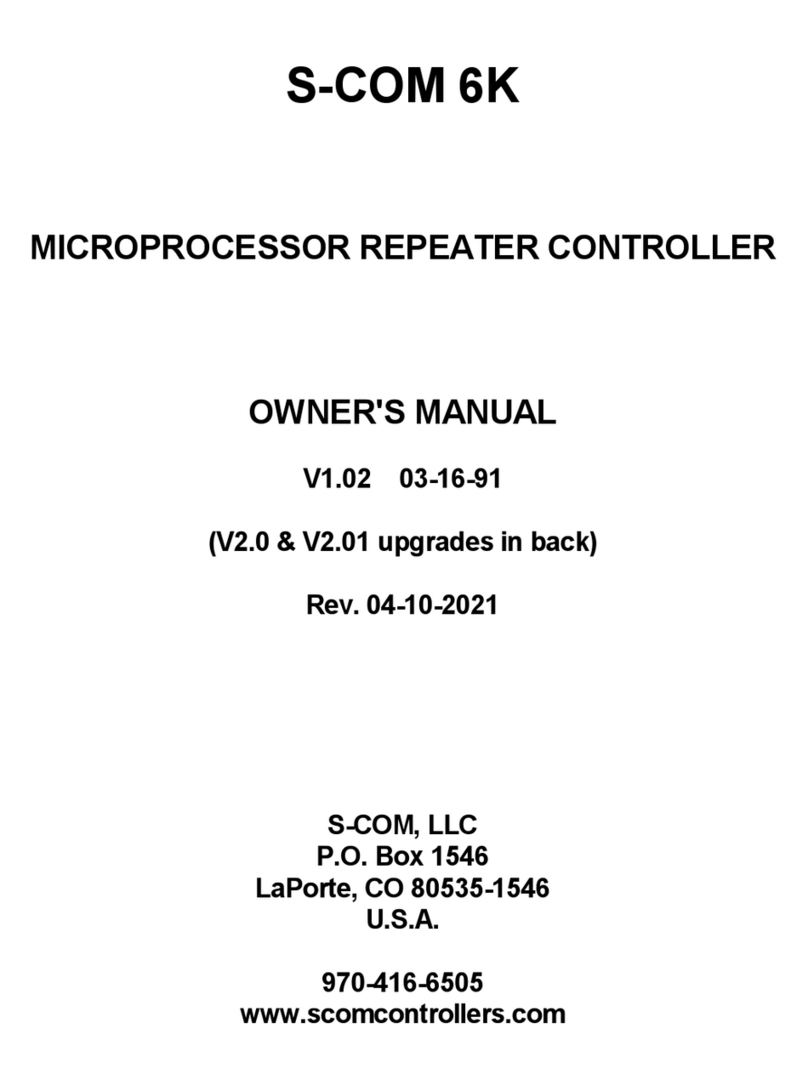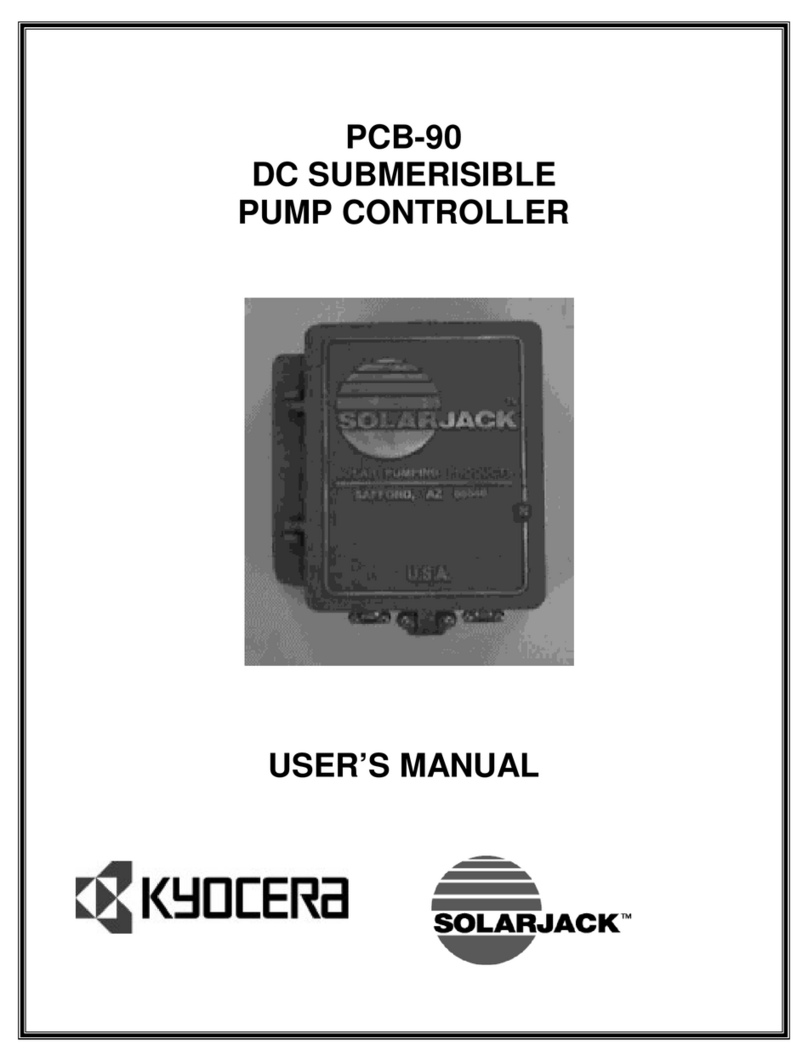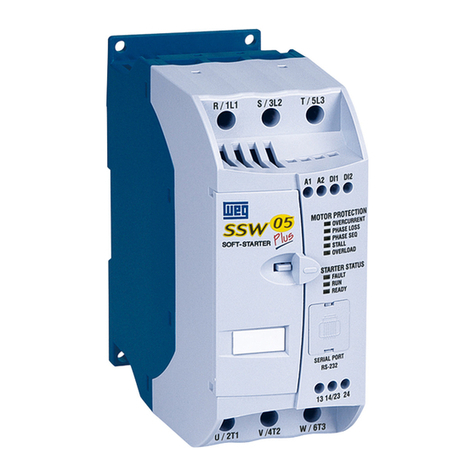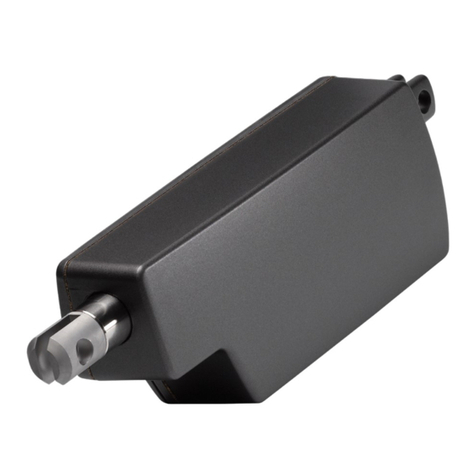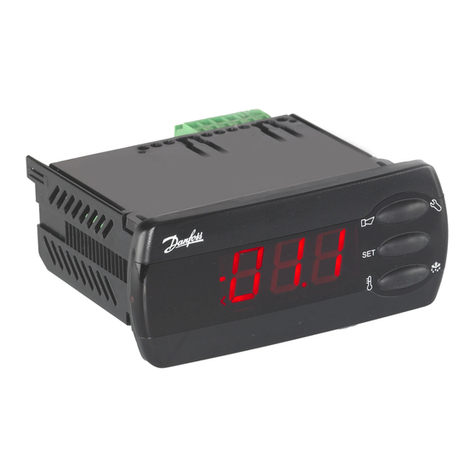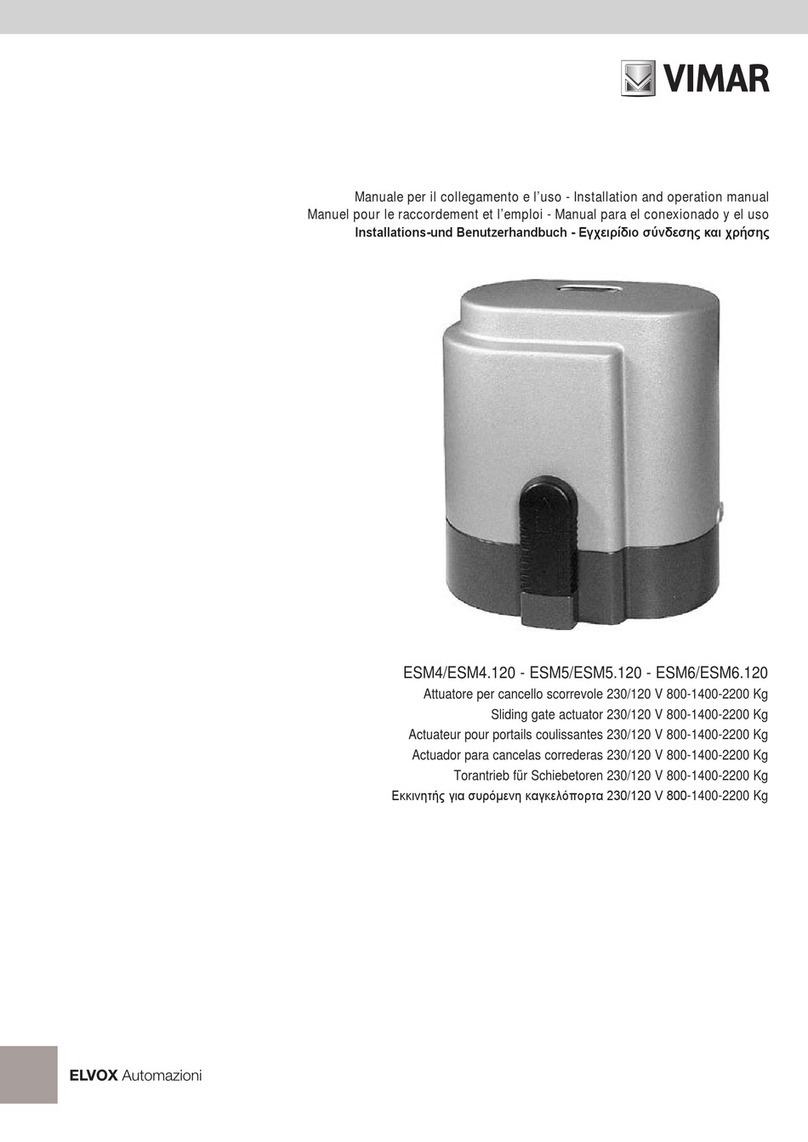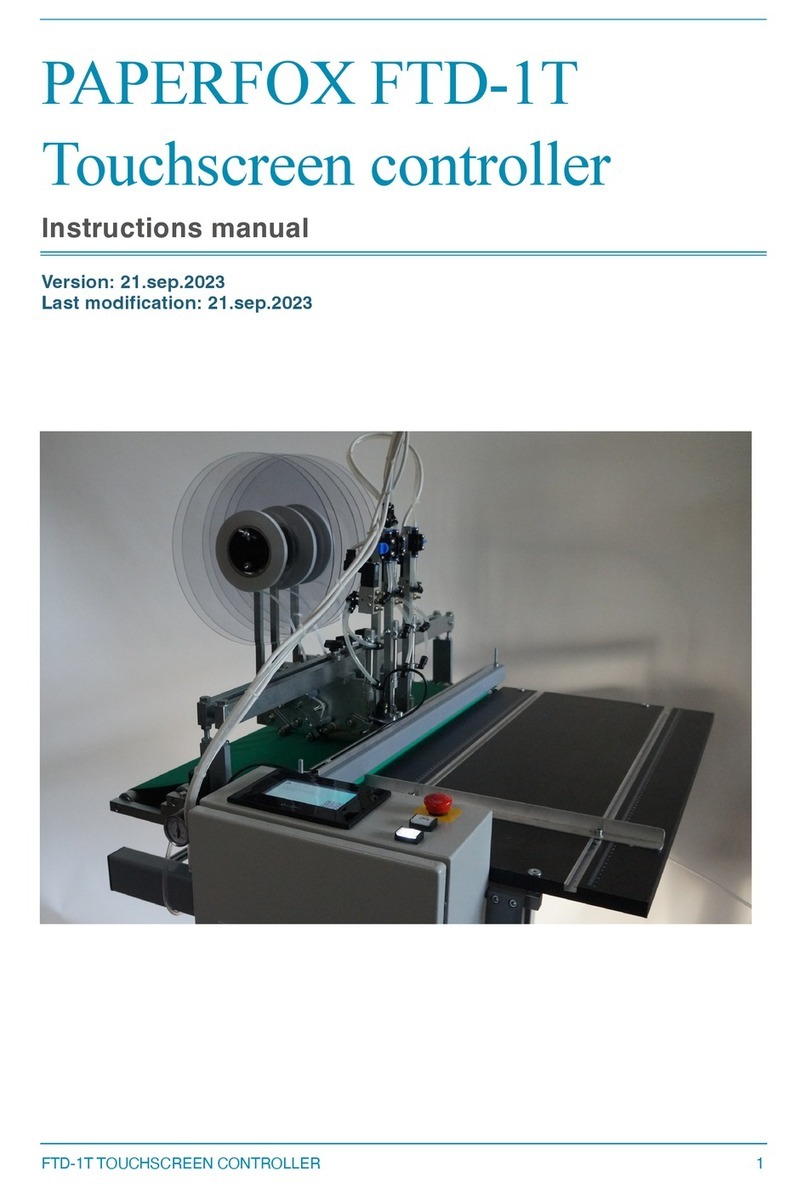Bray SERVO PRO 70 Series User manual

Series 70
SERVO PRO Version 3.0
Operation and Maintenance Manual
Your Global Flow Control Partner™


1
Series 70 Servo Pro
Operation and Maintenance Manual
FOR MORE INFORMATION ON THIS PRODUCT AND OTHER BRAY PRODUCTS
PLEASE VISIT OUR WEBSITE – www.bray.com
Table of Contents
1.0 Safety Instructions - Definition of Terms . . . . . . . . . . . . . . . . . . . . . . . . . . .2
1.1 Hazard-free Use . . . . . . . . . . . . . . . . . . . . . . . . . . . . . . . . . . . . . . .2
1.2 Qualified Personnel . . . . . . . . . . . . . . . . . . . . . . . . . . . . . . . . . . . . .2
1.3 Intended Use . . . . . . . . . . . . . . . . . . . . . . . . . . . . . . . . . . . . . . . .3
1.4 Warranty Information . . . . . . . . . . . . . . . . . . . . . . . . . . . . . . . . . . . .3
2.0 Description of Operation. . . . . . . . . . . . . . . . . . . . . . . . . . . . . . . . . . .3
2.1 Terminal Connections . . . . . . . . . . . . . . . . . . . . . . . . . . . . . . . . . . . .4
2.2 Configuration Switches . . . . . . . . . . . . . . . . . . . . . . . . . . . . . . . . . . .5
2.3 Configuration Switch Function Description. . . . . . . . . . . . . . . . . . . . . . . . . .6
2.4 Factory Default Settings for Servo Pro Rev F or Higher . . . . . . . . . . . . . . . . . . . .6
2.5 Previous Revisions of Servo Pro. . . . . . . . . . . . . . . . . . . . . . . . . . . . . . . .7
3.0 Quick Setup Instructions . . . . . . . . . . . . . . . . . . . . . . . . . . . . . . . . . . .8
3.1 Calibration Procedure . . . . . . . . . . . . . . . . . . . . . . . . . . . . . . . . . . . 11
4.0 Diagnostic Indicators. . . . . . . . . . . . . . . . . . . . . . . . . . . . . . . . . . . .11
4.1 Power LED . . . . . . . . . . . . . . . . . . . . . . . . . . . . . . . . . . . . . . . . .11
4.2 Motor Power LEDs . . . . . . . . . . . . . . . . . . . . . . . . . . . . . . . . . . . . .11
4.3 Status LED . . . . . . . . . . . . . . . . . . . . . . . . . . . . . . . . . . . . . . . . .11
4.4 Status LED Flash Codes . . . . . . . . . . . . . . . . . . . . . . . . . . . . . . . . . . 12
5.0 Hardware Description . . . . . . . . . . . . . . . . . . . . . . . . . . . . . . . . . . . 13
5.1 Terminal Block Connections . . . . . . . . . . . . . . . . . . . . . . . . . . . . . . . . 13
5.1.1 Power Input Terminals . . . . . . . . . . . . . . . . . . . . . . . . . . . . . . . . . . . 13
5.1.2 Command Signal Input Terminals . . . . . . . . . . . . . . . . . . . . . . . . . . . . . 13
5.1.3 Output Signal Terminals . . . . . . . . . . . . . . . . . . . . . . . . . . . . . . . . . . 14
5.1.4 Handwheel Switch Terminals. . . . . . . . . . . . . . . . . . . . . . . . . . . . . . . .14
5.1.5 Travel Limit Switch Terminals . . . . . . . . . . . . . . . . . . . . . . . . . . . . . . . .15
5.1.6 Torque Limit Switch Terminals . . . . . . . . . . . . . . . . . . . . . . . . . . . . . . . 15
5.1.7 Feedback Potentiometer . . . . . . . . . . . . . . . . . . . . . . . . . . . . . . . . . .16
5.1.7.1 Feedback Potentiometer Installation and Calibration . . . . . . . . . . . . . . . . . . . .16
5.1.8 Control Box Terminal. . . . . . . . . . . . . . . . . . . . . . . . . . . . . . . . . . . .17
5.1.8.1 Control Box Wiring . . . . . . . . . . . . . . . . . . . . . . . . . . . . . . . . . . . . 17
6.0 Troubleshooting Guide. . . . . . . . . . . . . . . . . . . . . . . . . . . . . . . . . . .18
6.1 Troubleshooting Example . . . . . . . . . . . . . . . . . . . . . . . . . . . . . . . . . 18
6.2 Troubleshooting Chart . . . . . . . . . . . . . . . . . . . . . . . . . . . . . . . . . . .19

2
Series 70 Servo Pro
Operation and Maintenance Manual
1.1 Hazard-free Use
This device left the factory in proper condition to
be safely installed and operated in a hazard-free
manner. The notes and warnings in this document
must be observed by the user if this safe condition
is to be maintained and hazard-free operation of
the device assured.
Take all necessary precautions to prevent damage
to the Servo Pro due to rough handling, impact, or
improper storage. Do not use abrasive compounds
to clean the Servo Pro, or scrape its surfaces with
any objects.
Configuration and calibration procedures are
described in this document. Proper configuration
and calibration is required for the safe operation
of the Servo Pro.
The control system in which the Servo Pro is installed
must have proper safeguards to prevent injury to
personnel, or damage to equipment, should failure
of system components occur.
This document does not cover every detail about
every version of the product described. It cannot
take into account every potential occurrence in
installation, operation, maintenance and use.
If situations transpire that are not documented
in sufficient detail, please request the required
information from the Bray Distributor or
Representative responsible for your area.
1.2 Qualified Personnel
A qualified person in terms of this document is one
who is familiar with the installation, commissioning
and operation of the device and who has appropriate
qualifications, such as:
• Is trained in the operation and maintenance of
electric equipment and systems in accordance
with established safety practices
• Is trained or authorized to energize, de-energize,
ground, tag and lock electrical circuits and
equipment in accordance with established
safety practices
• Is trained in the proper use and care of personal
protective equipment (PPE) in accordance with
established safety practices
• Is trained in first aid
• In cases where the device is installed in a
potentially explosive (hazardous) location – is
trained in the operation, commissioning,
operation and maintenance of equipment in
hazardous locations
1.0 Safety Instructions - Definition of Terms
READ AND FOLLOW THESE INSTRUCTIONS
SAVE THESE INSTRUCTIONS
WARNING indicates a potentially hazardous situation which, if not avoided,
could result in death or serious injury.
CAUTION indicates a potentially hazardous situation which, if not avoided,
may result in minor or moderate injury.
NOTICE
used without the safety alert symbol indicates a potential situation
which, if not avoided, may result in an undesirable result or state,
including property damage.
!
!

3
Series 70 Servo Pro
Operation and Maintenance Manual
!
WARNING
The actuator must only be installed, commissioned,
operated and repaired by qualified personnel.
The actuator is designed for installation inside
the Bray S70 Electric Actuator, and to position an
industrial quarter-turn valve. It must be installed
according to its intended purpose.
The Servo Pro controls the movement of an electric
actuator that generates large mechanical forces.
To prevent injury, installation, commissioning,
operation and maintenance must be carried out
under strict observation of the applicable safety
regulations.
The specifications of the examination certificate
valid in the applicable country must be observed.
This includes the actuator in which the Servo Pro
is installed.
Reference is specifically made here to observe
the applicable safety regulations for actuators
installed in potentially explosive (hazardous)
locations. This includes the actuator in which the
Servo Pro is installed.
Verify that the main electric power supplied to
the Servo Pro is compliant with the specifications
on the product label and the specifications in the
examination certificate valid in the applicable
country.
Avoid electrostatic discharges within hazardous
areas.
The housings and external connections on the
actuators (in which the Servo Pro is installed)
are designed for use in potentially explosive
(hazardous) locations and may only be opened
after all electrical power to the actuator has
been removed.
Correct and safe operation of the Servo Pro is
dependent upon proper transport, storage and
installation in addition to proper operation and
maintenance.
1.3 Intended Use
The actuator described in this guide has been
developed, manufactured, tested and documented
with all relevant safety standards taken into account.
If the handling rules and safety information
for configuration, calibration, installation and
maintenance are observed, and the product is used
for its intended purpose, there is normally no danger
with regard to material damage or personnel health.
1.4 Warranty Information
The content of this document is not part of, and
does not modify, a previous or current agreement,
undertaking or legal relationship. Bray Controls is
bound solely by the contract of sale, which also
contains the complete and exclusive warranty.
The contractual warranty conditions are neither
extended nor restricted by this document.
2.0 Description of Operation
The Bray Series 70 Servo Pro provides complete
control and monitoring of the Bray S70 Electric
Actuator.
Figure 1: S70 Servo Pro
Revision F or Higher
The basic function of the Servo Pro is to position
the S70 Actuator in response to a command signal
from a process controller. The process controller
contains a desired process setpoint entered by the
user, and continually monitors the process variable
(such as flow rate, tank level, etc.) through some
type of sensor. Varying the command signal to the
Servo Pro will cause the actuator to change

4
Series 70 Servo Pro
Operation and Maintenance Manual
position, which will move the associated control
valve to modify the process variable. The process
controller continually calculates and transmits the
appropriate command signal to the Servo Pro to
maintain the process at the desired set point.
The command signal to the Servo Pro can be various
DC current, voltage or resistance ranges selected
by configuration switches.
The Servo Pro simultaneously provides a feedback
output signal representing the current actuator
position. The feedback signal can be various DC
current or voltage ranges selected by configuration
switches.
Figure 2: 110VAC or 220VAC Servo Pro Terminals
Revision F or Higher
2.1 Terminal Connections
CALIBRATE
+5 VDC
+5 VDC
INPUT (-)
INPUT (+)
OUTPUT (-)
MOTOR
CLOSE
MOTOR
OPEN
NEUTRAL
NEUTRAL
LINE POWER
OUTPUT (+)
FUSE
COMMON
COMMON
HANDWHEEL
STATUS
OPEN
CLOSE
COMMON
COMMON
CLOSE LIMIT
OPEN LIMIT
COMMON
OPEN
CLOSE
OPEN
SPEED
CLOSE
SPEED
DEAD BAND
HEATER
10987654321
S10
S9
S8
S7
S6
S5
S4
S3
S2
S1
ON
FB POT
CONTROL BOX TORQUE LIMIT
HIGH
VOLTAGE
SERVO
PRO
FEEDBACK
POT
CONTROL
STATION
HANDWHEEL
TORQUE
SWITCHES
TRAVEL
LIMIT
INPUT
SIGNAL
OUTPUT
SIGNAL
MOTOR
WIRING
INPUT
POWER
CALIBRATE
+5 VDC
+5 VDC
INPUT (-)
INPUT (+)
OUTPUT (-)
MOTOR
CLOSE
MOTOR
OPEN
NEUTRAL
LINE POWER
OUTPUT (+)
FUSE
COMMON
COMMON
HANDWHEEL
STATUS
OPEN
CLOSE
COMMON
COMMON
CLOSE LIMIT
OPEN LIMIT
COMMON
OPEN
CLOSE
OPEN
SPEED
CLOSE
SPEED
DEAD BAND
HEATER
10987654321
S10
S9
S8
S7
S6
S5
S4
S3
S2
S1
ON
FB POT
CONTROL BOX TORQUE LIMIT
HIGH
VOLTAGE
SERVO
PRO
FEEDBACK
POT
CONTROL
STATION
HANDWHEEL
TORQUE
SWITCHES
TRAVEL
LIMIT
INPUT
SIGNAL
OUTPUT
SIGNAL
MOTOR
WIRING
INPUT
POWER
Figure 2: 24VAC Servo Pro Terminals
Revision F or Higher

5
Series 70 Servo Pro
Operation and Maintenance Manual
2.2 Configuration Switches
NOTICE
Disconnect all electric power to the Servo Pro prior to adjusting configuration switches. Reconnect
electric power only after all the configuration switches are in the proper position.
The configuration switches are located on the top edge of the Servo Pro Revision F or higher,
between the Calibration button and the Status LED.
Carefully observe the ON and OFF orientation for each section of the configuration switches when
selecting desired options
Table 1: Configuration Switch Chart for Servo Pro
Revision F or Higher
Switch Command Signal Input
4-20 mA DC 0-5 VDC * 0-10 VDC 2-10 VDC
1Off On On On
2Off Off On On
3Off Off Off On
Feedback Output Signal
4-20 mA DC 0-5 VDC 0-10 VDC 2-10 VDC
4Off On On N/A
5 On Off Off N/A
6Off On Off N/A
Forward
Acting
Reverse
Acting
7Off On
Fail in
Last Position
Fail
Enable **
8Off On
Fail
Close
Fail
Open
9Off On
10
Torque
Switch Enable
Torque
Switch Disable
Off On
*To control the Servo Pro with a remote potentiometer, set the Command Input to 0-5VDC
(see Command Signal Notice section; page 8).
**Fail position is the position that the Servo Pro will move the actuator when the control signal is
removed. It does not apply to 0-5VDC or 0-10VDC Command Signals.

6
Series 70 Servo Pro
Operation and Maintenance Manual
2.3 Configuration Switch Function
Description
Command Signal Input – the signal from the
process controller that represents the desired
actuator position.
Feedback Output Signal – the signal from the
Servo Pro that represents the current actuator
position.
Forward Acting – the actuator will move toward
the open direction with an increase in command
signal.
Reverse Acting – the actuator will move toward the
close direction with an increase in command signal.
Fail Enable – the actuator will move to a position
selected by the user upon loss of command signal.
NOTICE
The command signal is considered lost when it is
below the low limit of the selected range.
The command signal cannot be out of range when
0-5 VDC or 0-10 VDC are selected because 0 VDC
is a valid value.
The fail position will not be reached if command
signal AND electric power are both removed from
the Servo Pro. Electric power must be maintained
in order to move the motor in the actuator.
Fail in Last Position – The actuator will remain
in the position it reached when the command
signal was lost.
Fail Close – The actuator will move to the fully
closed position when the command signal is lost.
Fail Open – The actuator will move to the fully
open position when the command signal is lost.
Torque Switch Enable – The actuator will respond
to the optional switches connected to the torque
limit inputs. If the open torque switch is activated
(the switch has been tripped by the torque switch
cam) the actuator will not move any closer to the
fully open position. If the close torque switch is
activated (the switch has been tripped by the close
torque switch cam) the actuator will not move any
closer to the fully closed position.
NOTICE
If the Torque Switch Enabled option is selected, the
actuator must be equipped with properly set torque
switches wired to the Servo Pro. The absence of
properly set torque switches will prevent actuator
movement in one, or both, directions.
Torque Switch Disable – the Servo Pro will not
respond to any switches connected to the Torque
Switch inputs. This option should be used when
the optional torque switches are not installed in
the actuator.
2.4 Factory Default Settings for Servo
Pro Rev F or Higher
Unless specified by the user, the configuration
switches on the Servo Pro Revision F or higher are
set to the following default positions when shipped
from the Bray factory:
Switch 1 – Off
Switch 2 – Off
Switch 3 – Off
Switch 4 – Off
Switch 5 – On
Switch 6 – Off
Switch 7 – Off
Switch 8 – On
Switch 9 – Off
Switch 10 – On
The factory default settings will place the Servo Pro
Revision F or higher in the following configuration:
Command Signal - 4-20 mADC
Feedback Output Signal – 4-20 mADC
Forward Acting
Fail Enable
Fail Closed
Torque Switch Disable

7
Series 70 Servo Pro
Operation and Maintenance Manual
2.5 Previous Revisions of Servo Pro
The previous version of Servo Pro (Revision D) has
a different physical layout and configuration switch
arrangement than Revision F or higher.
Revision D does not include terminals for wiring
the Local Control Box, or for Torque Switches, or
for wiring the Anti-Condensation Heater.
NOTICE
The third character in the serial number indicates
the Revision Level of the Servo Pro.
There are two very distinct differences between
Revision D and F or higher: (a) the Configuration
switch arrangement, and (b) the physical layout
of the PCB. Please be sure to refer to the images
below, and or the serial number on the unit to
determine the Revision before attempting to set
the Configuration switches.
Figure 3: Photographic Comparison of Servo Pro Revision D and Revision F or Higher
Servo Pro Revision D Servo Pro Revision F or higher

8
Series 70 Servo Pro
Operation and Maintenance Manual
Switch Command Input
4-20 mA DC 0-5 VDC 0-10 VDC 2-10 VDC
1 On Off Off Off
2Off Off On On
3Off Off Off On
10 Off On On On
Output
4-20 mA DC 0-5 VDC 0-10 VDC 2-10 VDC
4 On Off Off N/A
5Off On On N/A
6Off On On N/A
Forward
Acting
Reverse
Acting
7Off On
Fail in
Last
Fail
Enable
8Off On
Fail
Close
Fail
Open
9Off On
Table 2: Configuration Switch Chart for Servo Pro
Revision D
3.0 Quick Setup Instructions
!
WARNING
Do not connect the electric power supply until
instructed to do so.
Refer to the Configuration Switch charts and
descriptions in Sections 2.1, 2.2 and 2.3 when
performing the Quick Setup.
A. Set the Command Signal Input configuration.
B. Set the Feedback Output Signal configuration.
C. Select the Operating Mode (Forward Acting or
Reverse Acting)
D. Select Fail Enable or Fail in Last Position
a. If Fail Enable is selected, then select Fail Open
or Fail Close with Switch 9
b. If Fail Enable is not selected, the actuator will
Fail in Last Position
E. Verify (or adjust) the travel stop limits in the
actuator
a. Bray actuators are shipped with the travel
switches in the factory default position - close
travel limit set at 0 degrees and the open travel
limit set at 90 degrees
b. Bray actuators equipped with Servo Pro have
the internal feedback potentiometer set in the
NOTE: The following chart is for configuration of an older model Servo Pro (Rev. D).
Please verify that the model you are using is the same model before consulting this chart.

9
Series 70 Servo Pro
Operation and Maintenance Manual
proper position to match the travel switch
factory default (fully close at 0 degrees and
fully open at 90 degrees)
c. If the travel switch settings are moved from
the factory default position, the internal
feedback potentiometer must be adjusted
to match the new travel switch setting. This
is done by performing a calibration routine.
d. For more details on setting the travel switch
settings, refer to the S70 Operation and
Maintenance Manual.
F. Select the Torque Switch Enable or Disable
a. If optional torque switches are installed in the
actuator, select Torque Switch Enable. The
optional torque switches must be properly
set and wired to the Servo Pro. Refer to the
S70 Operation and Maintenance Manual for
more information.
b. If optional torque switches are not installed
in the actuator, select Torque Switch Disable.
!
WARNING
Before applying the appropriate electrical supply
voltage, verify that the actuator and Servo Pro
have been properly wired to the factory supplied
wiring diagram.
NOTICE
To prevent noise coupling between conductors,
power lines and signal/communication lines should
not be routed together in the same conduit or cable
tray. If they must cross each other, then it should
only be done at right angles
Recommended distances below should be
maintained between power and signal/
communication conduit:
Metal Conduit:
Conductor carrying less than 20A = At least 4 in.
Conductor carrying more than 20A up to 100kVA =
At least 8 in.
Conductor carrying more than 100kVA =At least
1.5 ft.
Non-Metallic Conduit:
Conductor carrying less than 20A = At least 8 in
Conductor carrying more than 20A up to 100kVA =
At least 2 ft.
Conductor carrying more than 100kVA = At least
3 ft.
Please refer to NEC guidelines for proper wiring
techniques in USA. Other countries must follow
all local codes for safety requirements.
Shielding
Signal/communication lines should be shielded.
Shield must be grounded at one end only, preferably
at the controller. Grounding the shield at more than
one location can introduce noise in the circuitry by
forming ground loops.
G. Apply the command signal input
NOTICE
Ensure that your controller is able to provide the
proper command signal range given the following
input impedance values:
4-20 mA 200 Ohm
0-5 VDC >10 MOhm
0-10 VDC >10 MOhm
a. The command signal must be connected to the
proper terminals. Refer to the wiring diagram.
b. The command signal input must match
the range selected with the configuration
switches.
c. The command signal must be a valid value
(i.e., if 4-20 mA DC is selected, the value
must be no less than 4 mA and no greater
than 20 mA.)
d. Note: a good value to select for Calibration
would be mid-travel (i.e. 12 mA DC)
Isolation Transformers
For circuits that are located in the proximity of
excessive electrical noise generators, isolation
transformers should be used to filter and prevent
noise from entering into the circuitry.
Transient Suppression
Electromagnetic Interference (EMI) can result
from inductive loads, which can adversely affect
electronic circuits.

10
Series 70 Servo Pro
Operation and Maintenance Manual
Appropriately sized surge suppressors should
be installed whenever inductive loads such as
transformers, relays, solenoids, motors, etc. are
operated. This will help prevent transient EMI surges
from damaging the sensitive electronic circuits.
H. Apply the appropriate supply voltage to the
power input terminals.
a. Verify the Status LED is flashing normal
operation – a green “heartbeat” consisting
of a repeating pattern one second on and
one second off.
b. If the Status LED is flashing red, the problem
must be resolved before Calibration can begin.
Refer to the Troubleshooting section of this
manual and the Status Code Flash Table for
more information.
I. Accept or Adjust the Deadband - Optional
a. The factory default is midrange – the deadband
potentiometer is midway between fully
clockwise and fully counter-clockwise. If this is
acceptable, no further adjustment is necessary.
b. Rotate the deadband potentiometer clockwise
to increase the deadband.
c. Increasing the deadband reduces the
potential for the actuator to oscillate around
the desired setpoint. This oscillation is often
called “hunting.” An actuator responding
to a moving setpoint is not hunting, but is
operating properly.
d. Decreasing the deadband allows the actuator
to reach a position closer to the desired
position, as long as the actuator does not
oscillate (hunt) around the setpoint.
J. Accept or Adjust the Open Speed - Optional
a. The factory default is full speed – the open
speed potentiometer is in the fully counter-
clockwise position. If this is acceptable, no
further adjustment is necessary.
b. The full speed (fastest speed) of the actuator
is listed on the label.
c. Rotate the open speed potentiometer
clockwise to reduce the opening speed of
the actuator.
d. Reducing the opening speed of the actuator
can allow more precise positioning of the
actuator.
K. Accept or Adjust the Close Speed - Optional
a. The factory default is full speed – the close
speed potentiometer is in the fully counter-
clockwise position. If this is acceptable, no
further adjustment is necessary.
b. The full speed (fastest speed) of the actuator
is listed on the label.
c. Rotate the close speed potentiometer
clockwise to reduce the closing speed of the
actuator.
d. Reducing the closing speed of the actuator can
allow more precise positioning of the actuator.
NOTICE
Reducing the closing speed of the actuator can also
reduce the potential of water hammer damage.
Electric actuators are usually slow enough to avoid
water hammer even at the full speed setting – but
the user should verify this setting.
Shielding
Signal/communication lines should be shielded.
Shield must be grounded at one end only, preferably
at the controller. Grounding the shield at more than
one location can introduce noise in the circuitry by
forming ground loops.
L. Connect the Output Signal to the process
controller - Optional
a. Wire the positive conductor to the OUTPUT
(+) terminal.
b. Wire the negative conductor to the OUTPUT
(-) terminal.
c. Select the desired output signal range using
the Configuration switches 4, 5 and 6.
M. Connect the Anti-Condensation Heater –
Optional
a. Connect the wires from the Anti-Condensation
Heater to the HEATER terminals.
b. The Heater rating must match the voltage
rating of the Servo Pro.

11
Series 70 Servo Pro
Operation and Maintenance Manual
3.1 Calibration Procedure
The calibration procedure should be run when the
Servo Pro is first commissioned, and anytime that a
subsequent change is made to either the Servo Pro
Configuration or the actuator in which the Servo
Pro is installed.
1. Engage the actuator handwheel by pulling it
outward, and manually move the actuator to
the mid-travel position.
2. Disengage the actuator handwheel by pushing
it inward.
3. Press the Calibration button, hold it for a
minimum of 2 seconds, and release the button.
4. The Servo Pro should enter the Calibration routine
and move the actuator toward the fully closed
position. After reaching the fully closed position, it
will reverse travel and move toward the fully open
position. After reaching the fully open position,
the Servo Pro will write the calibration value to
memory, return to normal operation, and move
the actuator to the position that matches the
command input signal.
5. After a successful calibration, the Status LED will
return to the normal heartbeat pattern.
6. After an unsuccessful calibration attempt, the
Status LED will flash an error code of “red-
green-red-green.” For more information on the
error codes, refer to the Status LED Flash Code
Table. Correct the error and run the calibration
procedure again.
4.0 Diagnostic Indicators
The Servo Pro has several diagnostic indicators, such
as the Power LED, Motor Open LED, Motor Close
LED, and Status LED. The Servo Pro is constantly
performing self-diagnostics. These indicators assist
the user in confirming proper operation of the
Servo Pro, and troubleshooting various operational
problems.
4.1 Power LED
The Power LED will light solid green when the proper
electrical power is supplied to the Servo Pro power
terminals. If the Power LED is not solid green, then
the power supply is not working and the Servo Pro
will not function.
The fuse must be installed for the Power LED to light.
4.2 Motor Power LEDs
There are two Motor Power LEDs.
The Motor Open LED will light green when the Servo
Pro is powering the motor in the open direction. This
occurs when the current actuator position is below
the command signal (desired actuator position.) The
actuator should be moving in the open direction
when the Motor Open LED is lit.
The Motor Close LED will light red when the Servo
Pro is powering the motor in the close direction. This
occurs when the current actuator position is above
the command signal (desired actuator position.) The
actuator should be moving in the closed direction
when the Motor Close LED is lit.
4.3 Status LED
The Status LED is a bi-color LED (red/green) that
indicates various operational conditions of the Servo
Pro. The Status LED flashes the green “heartbeat”
pattern – a repeating cycle of one second ON
followed by one second OFF – to indicate normal
operation.
Any flashing pattern other than the green heartbeat
indicates either an advisory condition or an error
condition.
Advisory conditions are combinations of green
flashes. These indicate the Servo Pro is operating,
but it may not be in an optimal condition. An
example would be Reverse Acting mode selected.
The user may desire this condition, but it may also
be an oversight that requires correction.
Error conditions are combinations of red flashes.
These indicate the Servo Pro is not operating
properly. An example would be handwheel
engaged. The Servo Pro cannot move the actuator
motor in either direction when the handwheel is
engaged.
NOTICE
Any Status LED Flash Code with green flashes is
simply an advisory that should be noted and may, or
may not, require adjustment. Actuators can operate
properly while the Status LED is flashing green.
Any Status LED Flash Code that contains red flashes is
an error that must be corrected before the actuator
can operate properly.

12
Series 70 Servo Pro
Operation and Maintenance Manual
4.4 Status LED Flash Codes
Table 3 shows various diagnostic Flash Codes and
their descriptions.
If more than one advisory condition or error
condition exists, only one Flash Code will appear at
a time. The first condition must be corrected before
the second (or subsequent) Flash Code will appear.
Table 3: Status LED Flash Codes
No. Indication Description Possible Solution(s)
1
Steady Green Flash
(1 second on, 1 second
off) “Heartbeat”
Normal Operation Servo Pro Functioning Normally
22 Green Flashes Calibration Defaults
Loaded
Calibration may be acceptable, but if not,
adjust travel limits and restart the Calibration
33 Green Flashes Reverse Acting Mode
Selected
This is an advisory that the Reverse Acting
mode has been selected. Adjust Configuration
switch 7 if forward operation is required.
44 Green Flashes
HVAC 2-10 VDC
Command Signal
Selected
This is an advisory that the HVAC 2-10 VDC
input has been selected. Adjust Configuration
switches 1, 2 and 3 if this Command Signal is
not required.
51 Red Flash Handwheel engaged Push the Handwheel in towards the actuator
to Disengage
62 Red Flashes Command Signal Failure
Verify Command Signal, verify wiring, adjust
Configuration switches to match Command
Signal
73 Red Flashes Feedback Pot Fault
Verify feedback pot wiring, position the
feedback Pot cam correctly, see Feedback Pot
calibration notes
84 Red Flashes Limit Switch Fault
Verify wiring of limit switches, verify limit
switch cam settings, verify that both limit
switches are not tripped simultaneously (the
actuator cannot be fully open and fully closed
at the same time)
95 Red Flashes Torque Switch Fault
Verify that optional torque switches are
installed and wired correctly, reverse
direction of actuator, correct over-torque
condition – OR – if optional torque switches
are not installed, disable the torque switch
input setting Configuration switch 10 to ON.
10 6 Red Flashes Feedback Pot Wired In
Reverse
This check is only performed during
Calibration. Remove power from the Servo
Pro, correct the wiring to the feedback pot,
reapply power to the Servo Pro, and restart
the Calibration.

13
Series 70 Servo Pro
Operation and Maintenance Manual
5.0 Hardware Description
The microprocessor-controlled Servo Pro enhances
the operation of the S70 actuator by providing full
positioning control, supplying an actuator position
feedback signal, responding to various switch
input conditions, performing self-diagnostics and
indicating operational status.
The Servo Pro microprocessor eliminates the
need to adjust potentiometers during calibration.
Calibration is performed by simply pressing a button.
The Servo Pro will automatically seek the fully closed
and fully open travel limits and store the values in
non-volatile memory.
5.1 Terminal Block Connections
NOTICE
The Servo Pro will accept wire sizes ranging from
14 to 24 AWG.
18 AWG wire is recommended.
Larger wire than 14 AWG could damage the
terminal block connections and should not be
used.
Each terminal connection on the Servo Pro is clearly
labeled on the top silk screen to simplify wiring as shown
in Figures 2 and 3.
5.1.1 Power Input Terminals
The electric power supplied to the Servo Pro
drives the actuator motor, all the circuitry inside
the module, plus all the devices connected to the
module such as the limit switches, torque switches,
handwheel switch, control box, output signal and
anti-condensation heater.
NOTICE
The electric power supplied to the Servo Pro
must match the rating shown on the Servo Pro
nameplate.
Each different rating (100 VAC, 220 VAC or 24 VAC)
requires a different Servo Pro unit.
The Servo Pro must be installed in an actuator that
matches the rating shown on the Servo Pro name-
plate. For instance, a 110 VAC Servo Pro must be
installed in a 110 VAC actuator.
CAUTION
The terminal block connections designed for high
voltage are placed behind a solid line labeled
HIGH VOLTAGE on the silk screen. Dangerous
high voltage (110 VAC or higher) can be present
on any of these conductors when the Servo
Pro is operating. Use caution to avoid injury to
personnel or damage to equipment.
Do not connect any 110 VAC or 220 VAC conductors
to any terminal blocks outside this labeled area.
The Servo Pro is designed to accept a single phase
AC line voltage of the proper value.
The Live conductor should be connected to the
Live terminal. The Neutral conductor should be
connected to the Neutral terminal.
5.1.2 Command Signal Input Terminals
Apply the command signal input
NOTICE
Note: Ensure that your controller is able to provide
the proper command signal range given the
following input impedance values:
4-20 mA 200 Ohm
0-5 VDC >10 MOhm
0-10 VDC >10 MOhm
The Servo Pro accepts a command signal from the
process controller that represents the desired position
of the actuator. The customer wires the command
signal to an output from their process controller.
The command signal has polarity that must be
observed. Connect the positive conductor of the
command signal to the INPUT (+) terminal. Connect
the negative conductor of the command signal to
the INPUT (-) terminal.
The command signal has four different ranges
selectable through configuration switches.
A potentiometer 10k ohm (or larger) can be used to
generate a command signal. Wire one fixed terminal
of the pot to the terminal labeled +5 Volts. Wire
the wiper of the pot to the terminal labeled INPUT
(+). Wire the other fixed terminal of the pot to the
terminal labeled INPUT (-). Set the command signal
to 0-5VDC using Configuration switches 1, 2 and 3.
!

14
Series 70 Servo Pro
Operation and Maintenance Manual
Refer to the configuration Switch Chart in Section
2.2.
The potentiometer command signal option is
useful to demonstrate an actuator equipped with
a Servo Pro when a 4-20 mA DC calibration device
is unavailable.
CAUTION
Do not connect any high voltage power to the
command signal input terminals as damage could
result.
NOTICE
Shielding
Signal/communication lines should be shielded.
Shield must be grounded at one end only, preferably
at the controller. Grounding the shield at more than
one location can introduce noise in the circuitry by
forming ground loops.
The command signal supplied to the Servo Pro
must be isolated from all other external circuits.
5.1.3 Output Signal Terminals
The Servo Pro supplies an output signal that
represents the current position of the actuator.
The customer wires the output signal to an input
of their process controller.
The output signal has polarity that must be observed.
Connect the positive conductor of the output signal
to the OUTPUT (+) terminal. Connect the negative
conductor of the output signal to the OUTPUT (-)
RETURN terminal.
The output signal has four different ranges
selectable through configuration switches. The
available ranges are:
4-20 mADC
0-5 VDC
0-10 VDC
The output signal is sometimes called the
Retransmission signal, or position feedback signal.
The output signal is calibrated by the microprocessor
at the same time the command signal is calibrated.
CAUTION
Do not connect any high voltage power to the
output signal terminals as damage could result.
The Servo Pro provides an active (powered) output
signal. Do not apply any additional power source
to this circuit.
NOTICE
The output signal in the 4-20mA mode is limited to
a total maximum load impedance of 400 ohms. The
output signal in the 0-5V or 0-10V mode is limited
to a minimum load impedance of 10K Ohms.
The output signal should be isolated from all other
external circuits.
The process controller receiving the output signal
should be adjusted to allow for a +/- 2% variance.
There is no change in the output signal range if
Reverse Acting mode is selected. The output signal
always operates in Forward Acting mode.
5.1.4 Handwheel Switch Terminals
The Servo Pro monitors the position of the actuator
manual override handwheel through switches
connected to the handwheel terminals.
The wiring to the handwheel terminals is connected
at the factory and should not require any adjustment
by the customer.
NOTICE
If the actuator handwheel is engaged (pulled fully
outward) the Servo Pro cannot power the actuator
motor in either direction.
The actuator handwheel must be disengaged
(pushed fully inward) for the Servo Pro to power
the actuator motor.
!
!

15
Series 70 Servo Pro
Operation and Maintenance Manual
CAUTION
Do not connect any high voltage power to the
hand-wheel switch terminals as damage could result.
Engaging the handwheel prevents the actuator
motor from becoming energized, but it does not
remove electric power from the Servo Pro. Exercise
caution to avoid personnel injury or damage to
property.
5.1.5 Travel Limit Switch Terminals
The Servo Pro accepts signals from travel limit
switches installed in the actuator that indicate
when the fully closed and fully open positions are
reached. When a travel limit is reached, the Servo
Pro will not power the actuator motor any farther
in that direction.
The wiring to the travel limit switch terminals is
connected at the factory and should not require
any adjustment by the customer. If a field repair is
required,refer to the wiring diagram to make sure
the open limit switch is wired between the OPEN
LIMIT terminal and the COMMON terminal, and
the close limit switch is wired between the CLOSE
LIMIT terminal and the COMMON terminal.
Normal operation requires a closed contact between
OPEN LIMIT and COMMON, and between CLOSE
LIMIT and COMMON.
The travel switches are used during the calibration
routine to indicate the fully closed and fully open
actuator positions.
Refer to the actuator manual for information on
adjusting the travel limit switches.
NOTICE
A travel switch that is broken, improperly wired,
improperly adjusted or missing from the actuator can
result in an open contact which will be interpreted by
the Servo Pro as the actuator reaching the travel limit.
Do not activate both travel switches simultaneously
as this will create an error condition. The actuator
cannot be fully open and fully closed at the same time.
CAUTION
Do not connect any high voltage power to the travel
limit switch terminals as damage could result.
5.1.6 Torque Limit Switch Terminals
The Servo Pro accepts signals from optional torque
limit switches installed in the actuator that indicate
when an over-torque condition exists while the
motor is moving in the closed or open direction.
When a torque limit is reached, the Servo Pro will
not power the actuator motor any farther in that
direction.
The wiring to the torque limit switch terminals is
connected at the factory and should not require
any adjustment by the customer. Torque switches
cannot be added to actuators in the field because
factory calibration is required.
Normal operation requires a closed contact between
the TORQUE LIMIT OPEN and COMMON,
and between the TORQUE LIMIT CLOSE and
COMMON.
!
!

16
Series 70 Servo Pro
Operation and Maintenance Manual
NOTICE
A torque switch that is broken, improperly wired,
or missing from the actuator can result in an open
contact which will be interpreted by the Servo Pro
as the actuator being at its max torque limit.
If the optional torque switches are not installed,
select Torque Switch Disable by setting
Configuration switch 10 to ON.
CAUTION
Do not connect any high voltage power to the
torque limit switch terminals as damage could
result.
5.1.7 Feedback Potentiometer
The Servo Pro uses the signal from the internal
feedback potentiometer to determine the current
actuator position.
The wiring to the feedback potentiometer is
connected at the factory and should not require
any adjustment by the customer. If a field repair is
required, follow the instructions below:
5.1.7.1 Feedback Potentiometer Instal-
lation and Calibration
1. Install the internal feedback potentiometer next
to the actuator indicator shaft using the two
threaded mounting holes provided.
2. The potentiometer assembly must be mounted
in the correct orientation in order to successfully
calibrate the Servo Pro.
3. Remove the indicator rotor from the indicator
shaft so that the drive slot on the top is visible.
4. Engage the handwheel (pulling it fully outward)
and manually move the actuator to the fully open
(counterclockwise) position.
5. Use the black feedback pot knob to rotate the
black feedback pot cam until the raised green rib
on the pot gear (see Figure 4 below) is directly in-
line with the slot on the top of the indicator shaft.
6. The actuator is now ready for the calibration
procedure described in Section 3.1.
NOTICE
The wiring of the feedback pot is critical to proper
operation.
Connect the orange wire from the wiper pin of the
pot to the middle terminal.
Connect the gray wire from the fixed pin of the
pot that is closest to the wiper pin to the +5V
terminal.
Connect the white wire from the fixed pin of the
pot that is farthest from the wiper pin to the COM
terminal.
Connect a voltmeter between the middle terminal
and the COMMON terminal. Apply power to the
Servo Pro, move the actuator to the fully open
position, and the reading should be close to
+5 VDC. Move the actuator to the fully closed
position, and the reading should be close to 0 VDC.
CAUTION
Do not connect any high voltage power to the
feedback pot terminals as damage could result.
Figure 4: Feedback Pot Mounting and Positioning.
!
!

A Division of BRAY INTERNATIONAL, Inc.
13333 Westland East Blvd. • Houston, Texas 77041
Tel: 281.894.5454 Fax: 281.894.9499 www.bray.com
All statements, technical information, and recommendations in this bulletin are for general use only. Consult Bray representatives or
factory for the specific requirements and material selection for your intended application. The right to change or modify product design
or product without prior notice is reserved. Patents issued and applied for worldwide.
Bray®is a registered trademark of Bray International, Inc. |© 2016 Bray International, Inc. All rights reserved. |OM-70-002 06-2016
Table of contents
Other Bray Controllers manuals
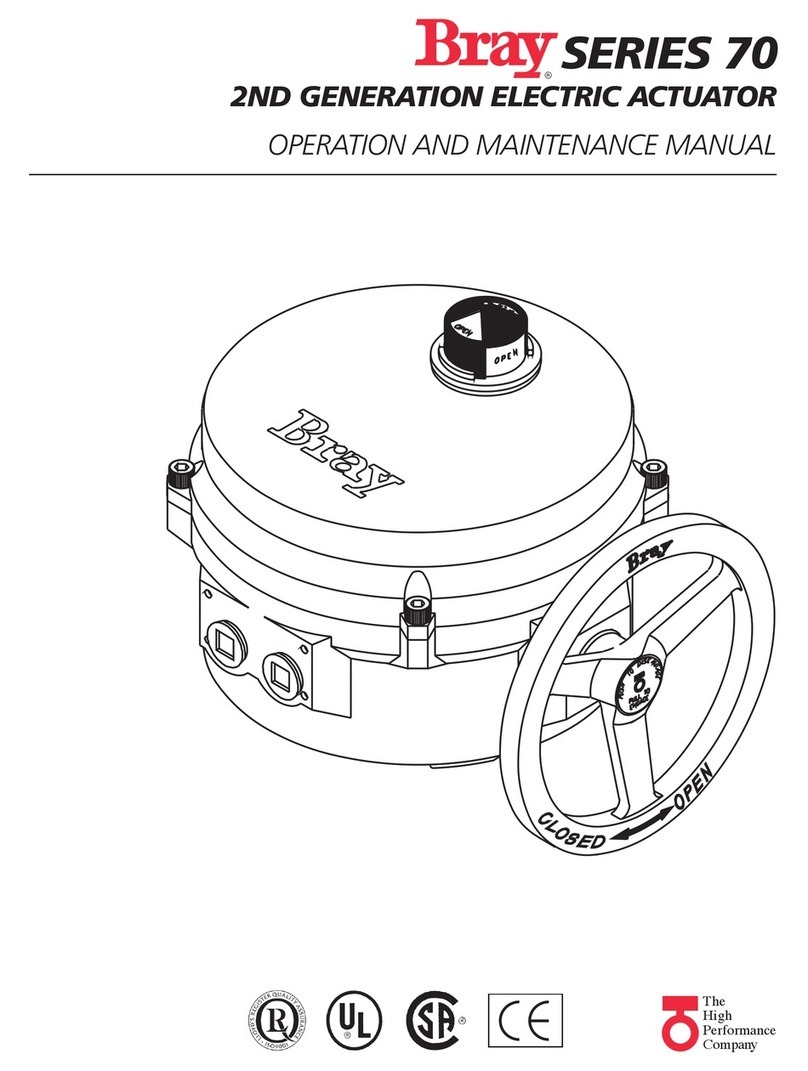
Bray
Bray Series 70 User manual

Bray
Bray Series 70 User manual
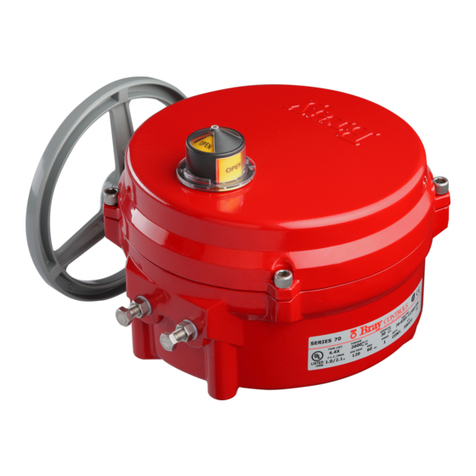
Bray
Bray Series 70 User manual
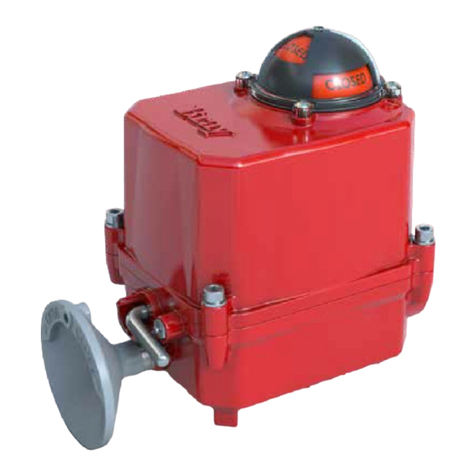
Bray
Bray 71 Seires User manual
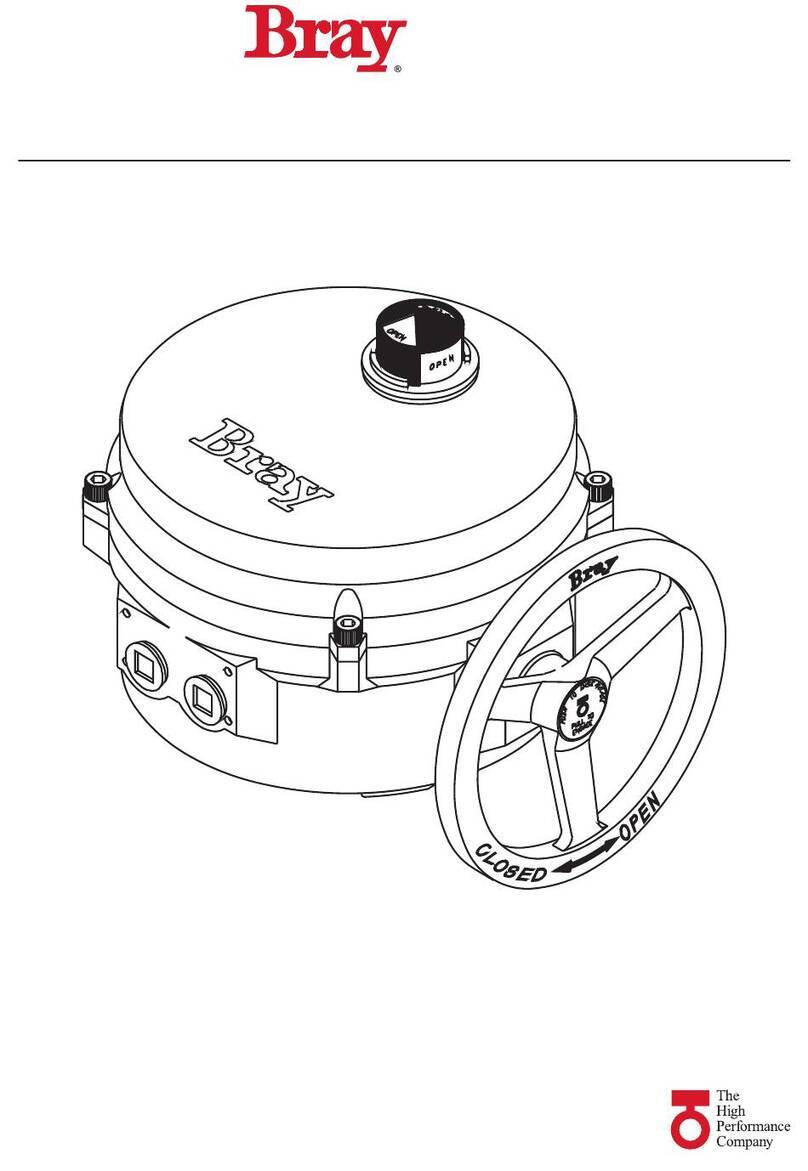
Bray
Bray 70-003-113-536 Series User manual
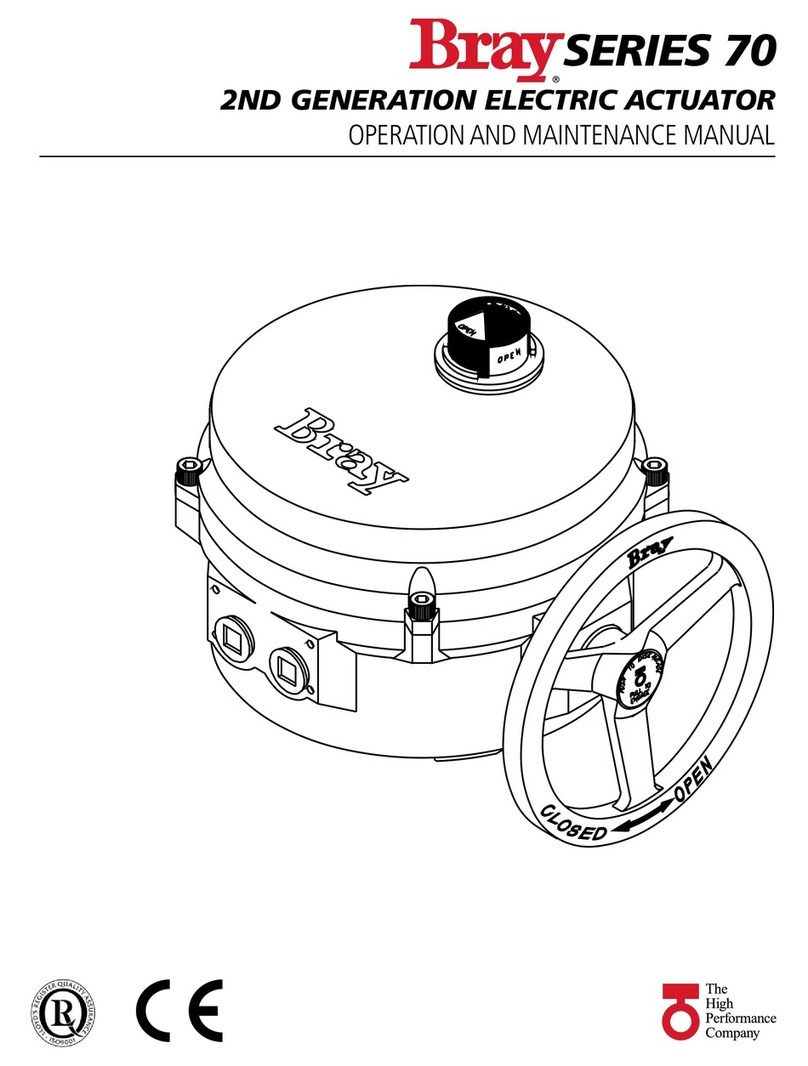
Bray
Bray Series 70 User manual
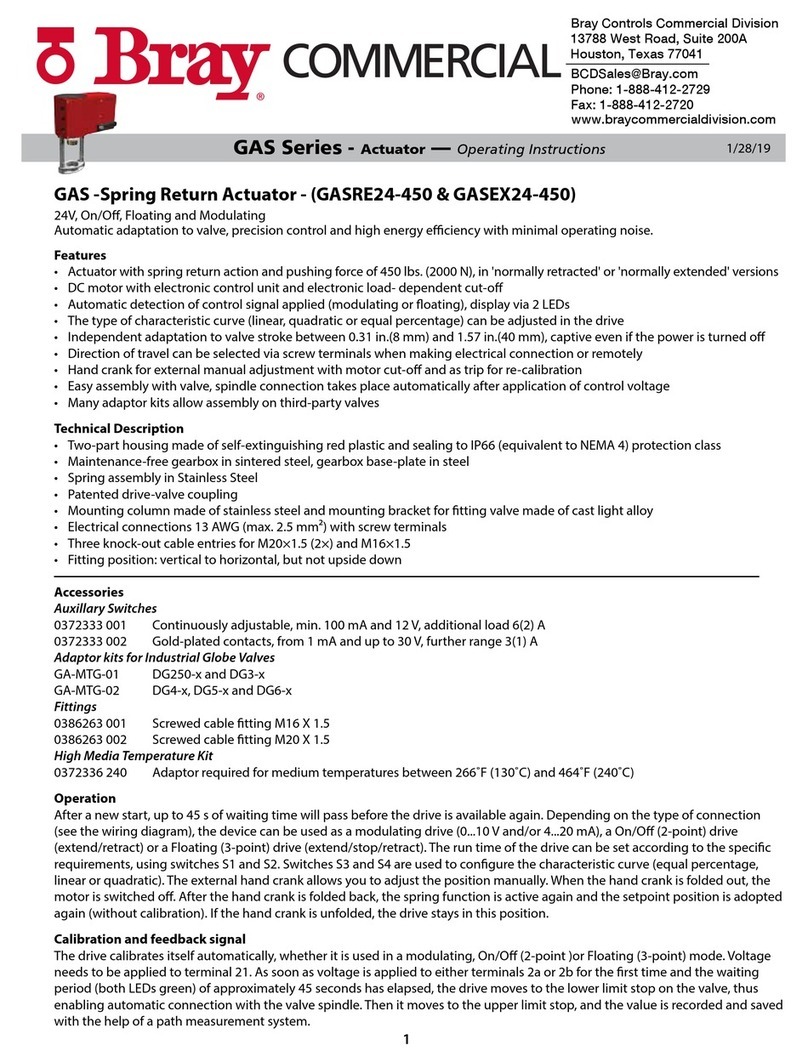
Bray
Bray GAS Series User manual

Bray
Bray Series 70 User manual
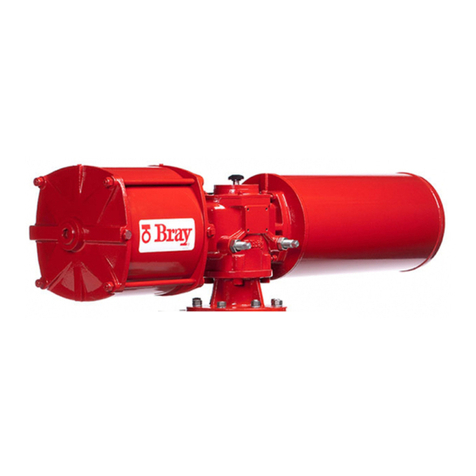
Bray
Bray 98 Series User manual
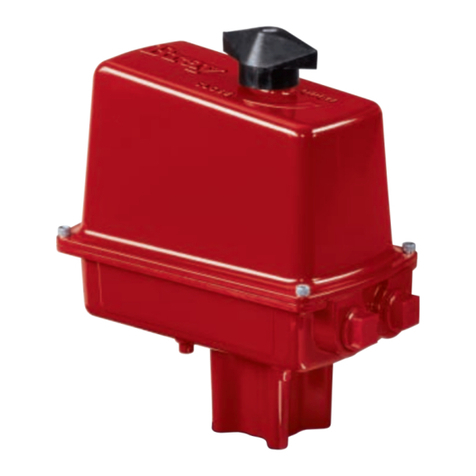
Bray
Bray 73 Series User manual
